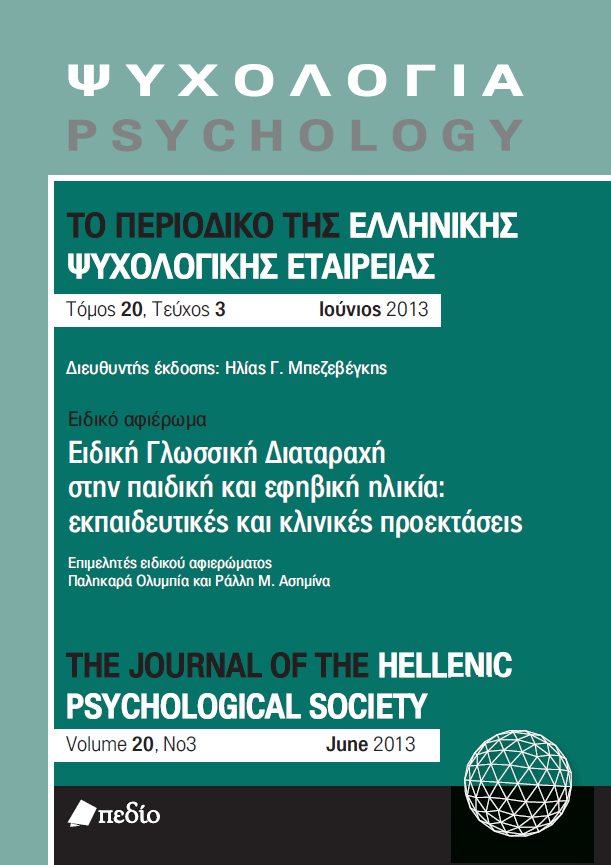Language deficits and motor asymmetry in children with SLI

Abstract
The present study aims at investigating whether a link between language deficits and upper and lower limb motor asymmetry can be established. We assessed language skills, handedness, and footedness in a group of 13 children with Specific Language Impairment (SLI) and two control groups matched on language age (LA) and chronological age
(CA) respectively. Specifically, we tested the production of object wh questions, object relative clauses and sigmatic past tense production for novel non-rhyming verbs, and administered hand and foot preference
questionnaires. While significant between group differences were found in the language tasks, as participants with SLI performed significantly below CA controls, the same level of performance was shown for hand and foot preference. Further analysis revealed no correlation between foot and hand preference for the SLI group in contrast to typically developing children. Additional regression analysis showed that the non-right foot preference could predict participation in the SLI group. These results may be indicative of poor hand-foot coordination in the SLI group and increased chance for SLI individuals to be grouped as non-right footed. We interpret these findings as showing immature motor development in SLI and pointing to a weak correlation between motor laterality and language deficits. We discuss the implications of our findings for the characterisation of the deficit in SLI.
Article Details
- How to Cite
-
Γώγου Α., Σταυρακάκη Σ., Γρούϊος Γ., & Τσιγγίλης Ν. (2020). Language deficits and motor asymmetry in children with SLI. Psychology: The Journal of the Hellenic Psychological Society, 20(3), 285–301. https://doi.org/10.12681/psy_hps.23542
- Issue
- Vol. 20 No. 3 (2013)
- Section
- SPECIAL SECTION

This work is licensed under a Creative Commons Attribution-ShareAlike 4.0 International License.
The journal PSYCHOLOGY adopts a Platinum open-access policy. Submission, processing or publication costs are waived by the Hellenic Psychological Society. Papers published in the journal PSYCHOLOGY are licensed under a 'Creative Commons Attribution-ShareAlike 4.0 International' licence. The authors reserve the copyright of their work and grant the journal the right of its first publication. Third-party licensees are allowed to use the published paper immediately after publication as they wish, provided they retain the defined by the license copyright formalities, regarding the reference to its author(s) and its initial publication in the journal PSYCHOLOGY. Moreover, any adjusted work should be shared under the same reuse rights, so with the same CC license.



